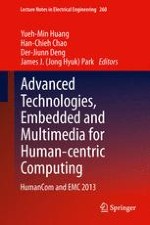2014 | OriginalPaper | Buchkapitel
Adopt Technology Acceptance Model to Analyze Factors Influencing Students’ Intention on Using a Disaster Prevention Education System
verfasst von : Yong-Ming Huang, Chien-Hung Liu, Yueh-Min Huang, Yung-Hsin Yeh
Erschienen in: Advanced Technologies, Embedded and Multimedia for Human-centric Computing
Verlag: Springer Netherlands
Aktivieren Sie unsere intelligente Suche, um passende Fachinhalte oder Patente zu finden.
Wählen Sie Textabschnitte aus um mit Künstlicher Intelligenz passenden Patente zu finden. powered by
Markieren Sie Textabschnitte, um KI-gestützt weitere passende Inhalte zu finden. powered by
